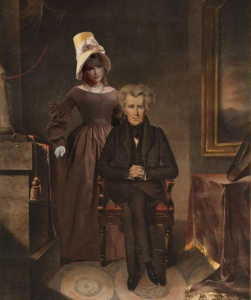BFA students had the perfect chance to show off their hard work, creativity and finished pieces last weekend at the Bachelor of Fine Arts Thesis Exhibition.
This year’s show included four of the five BFA seniors.
The honored artists, sculpture major James Flanigan, painting major Rebecca Goughnour, printmaking major Ryan Horvath and ceramics major Sarah Rebholz, shared the Warehouse Gallery One Space to present some of their careers’ best work.
Each artist had a section of 6,000 square feet of space where they presented a themed exhibit.
Rebholz’s exhibit, Clastic Aureoles, consisted of several circular shaped clay pieces. Rebholz contorts and plays with the clay to create different textures – sometimes the clay appears as if it is wood or stone.
Despite each piece having the same shape, Rebholz gives her pieces an individual personality. Each clay piece takes on a different circular shape with something added to it. Some resembled drinking gourds while others resembled disks.
“It’s something new and something different for people to look at,” Rebholz said. “You don’t really think, ‘Oh I’ve seen that before’ when you look at my art.”
Another unfamiliar group of art came from Horvath’s exhibition, Death, Detritus and Decay, which had a more tangible theme. His work included colorful mixed media prints that focused on the beauty of death.
Many of his art subjects were bird skeletons and other grotesque creatures, but there was nothing grotesque about his work. Horvath said he wants to motivate people to see the beauty of all of nature’s processes, including those that deal with death.
“I think that there is a lot of beauty that comes out of death and decay,” Horvath said. “We just don’t see it initially. There’s always new life and rebirth that comes out of decay.”
Freshman art education major Venise Keys said she thinks his work is pleasing.
“[He is] taking a different approach to beauty by showing what is not [stereotypically] beautiful … which is challenging,” Keys said.
Horvath prevails in this challenge by his use of colors, shapes and different mediums, which give life to his dead subjects. His use of lively colors such as red and green also help, but it is his ability to create visual texture that really brings his skeletons to life.
An even livelier exhibit was that of Goughnour’s paintings. They consisted of colorful “scribbled” lines that intertwined and danced off one another. But don’t think for a second these scribbles were similar to that of five-year-old’s doodle.
Goughnour does an excellent job of creating depth and space in her paintings. She uses the scribbles as a way to bring out the color in them.
Perhaps the best part of her art is that she leaves it up to the imagination to analyze what they are seeing. The scribbles can be interpreted in many different ways.
“A lot of times I see little creatures like monsters,” Goughnour said. “So for me they’re always doing something to me … sometimes they’re dancing, sometimes they’re sitting.”
Flanigan’s exhibit, Still Finding Myself, was one of the more technical exhibits. His sculptures can easily be displayed outside a park or inside a studio apartment.
Regardless of where they are, one can easily appreciate his work and its visual effect on the surrounding atmosphere. Flanigan’s sculptures are mostly steel figures of connected geometric shapes. They come in all sizes and colors.
Whether it’s working with clay, making prints or painting in scribbles, the exhibition was a way for the artists to showcase their talent before graduating. No matter what the future holds, these four BFA students are sure to leave a legacy.




